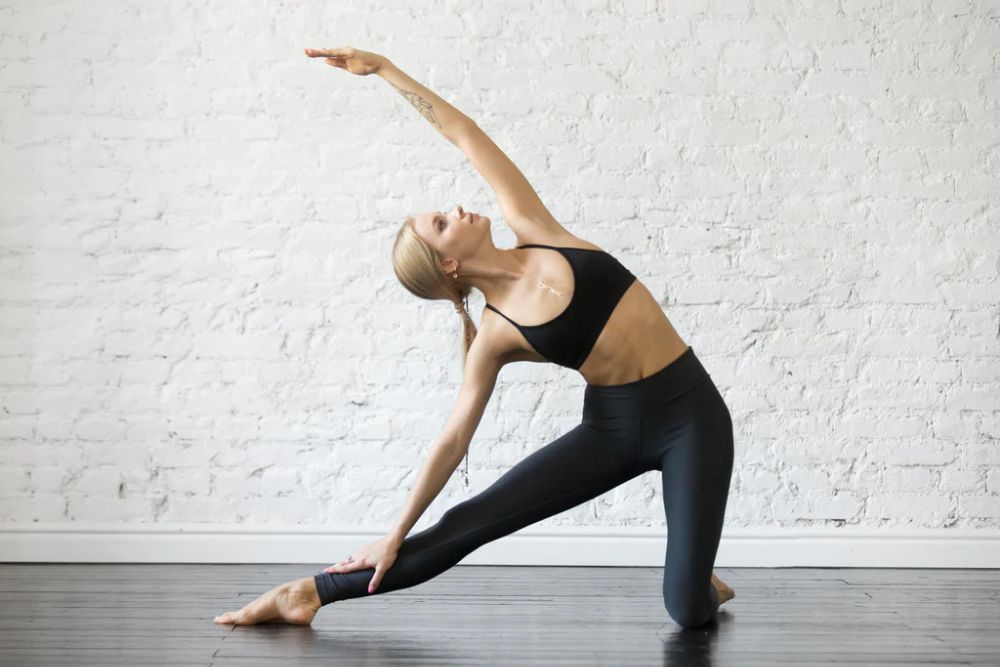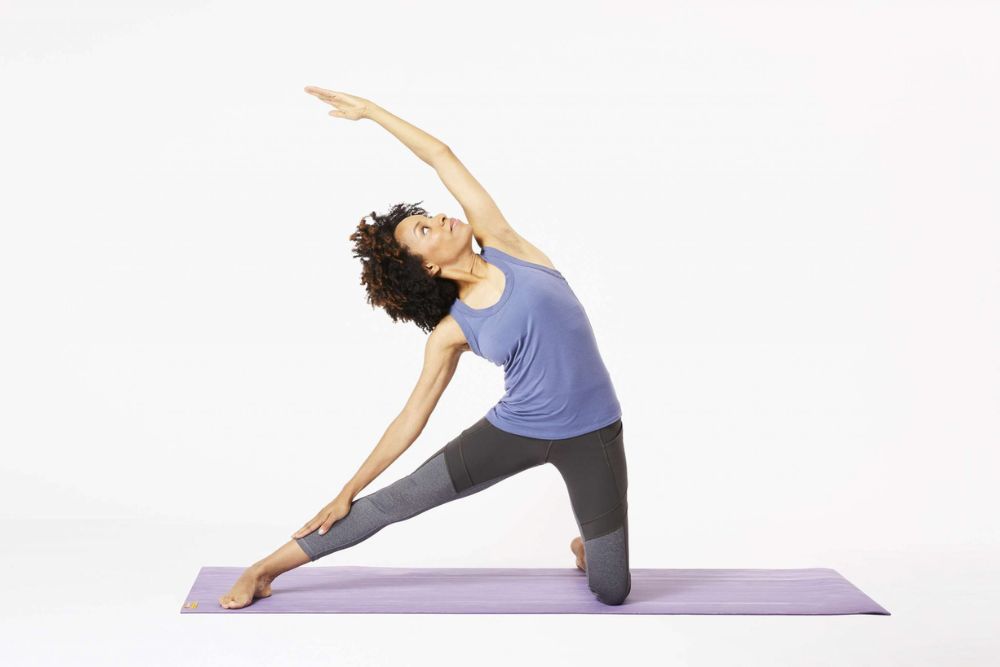Gate Pose (Side Stretch in Yoga) – Parighasana
*INTERMEDIATE LEVEL
I choose to open my heart to new spaces within myself.
I choose to stretch out everything that holds me back.
I allow my breath to flow freely…
In this very moment – I am the gate to inner freedom.
Gate Pose (Parighasana) belongs to the family of side-stretching postures that open the chest, stretch the side body, and create more space in the lungs and heart. The Sanskrit word parigha means a bar or gate, as the shape of the body resembles the opening of a gate or barrier.
This pose is considered an intermediate-level asana as it requires stability, balance, and flexibility in the hips and spine. Beyond physical benefits, it symbolically teaches us to open inner doors, to release limitations, and to expand the capacity for breath, energy, and life.
Effects and Benefits of Gate Pose
- Deeply stretches the side body and spine
- Opens the chest and increases lung capacity
- Stimulates digestive organs and relieves abdominal tension
- Improves spinal flexibility and mobility in the rib cage
- Strengthens the legs and stabilizes the knees
- Enhances blood circulation and oxygen supply
- Helps reduce stiffness in the back and shoulders
- Promotes emotional release and inner spaciousness
- Balances stability and flexibility in both body and mind

Instructions for Practicing Gate Pose
- Kneel on the floor with knees hip-width apart.
- Extend your right leg to the side, with the foot pressing firmly on the floor and toes pointing forward or slightly outward.
- Raise your arms to shoulder height.
- Inhale, and as you exhale, bend your torso to the right – sliding your right hand down the extended leg while lifting your left arm overhead.
- Keep the body in one plane, avoiding leaning forward or backward.
- Lengthen through the left side of the body, opening the chest toward the ceiling.
- Gaze forward or up toward the lifted hand.
- Stay for several breaths, then return to the starting position.
- Repeat on the other side.
Resting Poses
- Child’s Pose (Balasana)
- Corpse Pose (Savasana)
Variations of Gate Pose
- If you cannot reach your shin, place your hand on the thigh or on a yoga block.
- Slightly bend the extended leg for greater stability.
- Place a cushion or folded blanket under the kneeling knee for comfort.
- Advanced variation: bring both palms together overhead in Anjali Mudra and lengthen the side stretch further.

Precautions:
- If you have knee, hip, or lower back issues, practice carefully and under the guidance of an instructor.
- Avoid forcing the stretch – it should feel comfortable, not painful.
- Pregnant women may practice modified versions (support under the knee, gentler stretch) with medical approval.
- Always stay within your own limits and gradually deepen the pose.
Gate Pose teaches us that every tension in the body can become a gateway to freedom and peace. By opening with trust and breath, we create space for life energy to flow freely.
Parighasana reminds us that opening happens when we allow the body to breathe and expand in all directions. Each inhale creates space, each exhale releases what no longer serves us.
Practice this asana regularly to awaken vitality in your body and invite lightness into your daily movements.
Explore more side-stretching poses – each brings a new layer of freedom.


